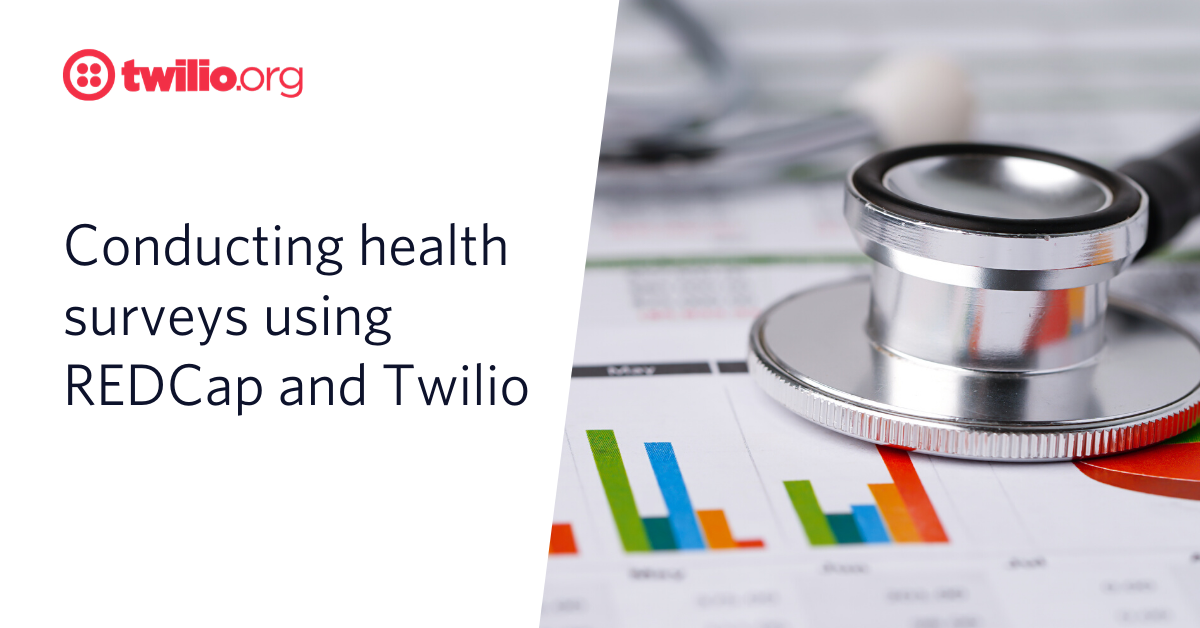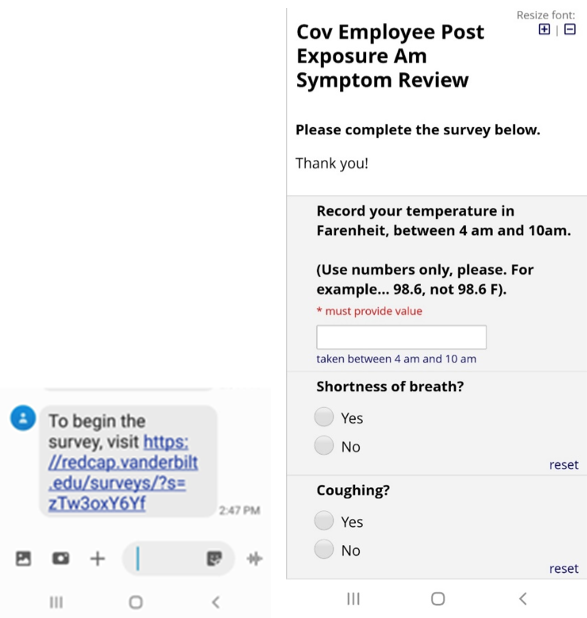How digital health surveying is critical to flattening the COVID-19 curve
Time to read:
This post is part of Twilio’s archive and may contain outdated information. We’re always building something new, so be sure to check out our latest posts for the most up-to-date insights.

Despite herculean efforts by first responders and health workers around the world, the coronavirus has managed to stay one step ahead of us, costing more lives every day. We can’t stop COVID-19 without first accurately and comprehensively tracking new infections. Until testing for COVID-19 is widely accessible, surveying remains one of the best tools available to public health organizations to quickly understand how the virus is spreading and explore ways we can collectively flatten the curve.
Organizations across the public health sector use surveys to inform COVID-19 response efforts in a variety of ways:
- Departments of health survey citizens for COVID-19 symptoms to understand virus hot zones in their region
- Hospitals remotely monitor the health of patients and frontline healthcare workers to prevent hospital overcrowding
- Universities collect data for critical research studies on the virus, including for ongoing clinical trials of the efficacy of COVID-19 pharmaceutical treatments and vaccines
Many of these organizations lean heavily on a healthcare-focused surveying tool called REDCap, which integrates with Twilio’s communications platform to rapidly collect and analyze COVID-19 health data, reaching people by text or by phone — all while protecting individuals’ personal health information in a HIPAA-compliant way.
A fast, scalable solution for health researchers
REDCap (Research Electronic Data Capture) is a secure web application for building and managing online surveys and databases. REDCap was created and developed at Vanderbilt University Medical Center and is specifically geared to support online or offline health data capture for research studies and operations and enables HIPAA-compliant data collection. The platform works at scale, with over 1.2 million users at more than 4,100 institutions in 137 countries using REDCap today.
With a direct integration using Twilio, REDCap healthcare organizations can rapidly build and deploy surveys that bridge the digital divide, reaching broader swaths of the population that may or may not have access to a WiFi connection or a smartphone. Twilio-powered communications also enable researchers to push surveys to respondents at the right time, on channels that nearly everyone has at hand. In essence, surveys can reach respondents where they are, at global scale.
How to create a survey with REDCap and Twilio
Health organizations can send surveys in two general ways: SMS or voice. The decision of which channel(s) to use is largely dependent on the population that must be surveyed and their preferred modes of communication.
When a REDCap survey is delivered via SMS, participants are sent a link that allows them to respond using a HIPAA-compliant browser-based application:

Health surveys can also be sent via a voice call. Questions are spoken aloud using Twilio’s text-to-speech capabilities, and participants respond by pressing numbers on their phone’s keypad. Voice-based surveying is especially useful for reaching populations that don’t have access to a smartphone or a computer:

Informing Covid-19 response
Here are just a few examples of ways that organizations use REDCap with Twilio today:
- Vanderbilt University Medical Center is using Twilio with REDCap to support several studies including an outpatient study of COVID-19 positive patients with hypertension and a public health surveillance study of COVID-19 in pediatric patients and their families. It is also being used as a resource to support telehealth visits to securely provide online call links from staff to patients.
- National Jewish Health is using REDCap with Twilio to monitor clinician wellness for those actively seeing patients. They also use REDCap and Twilio as the basis for an interactive behavioral health support project for its healthcare workers.
- The Marshfield Clinic Health System is canvassing employees for fever symptoms and uses Twilio to send employees text messages each day indicating whether they are medically clear, or if a temperature report is needed.
Getting started with REDCap and Twilio
The aforementioned examples are just a few of the ways we’ve seen public health organizations use REDCap with Twilio as part of their COVID-19 response.
We’re encouraged by what these researchers have accomplished to date, but know that there is still much work to be done. REDCap is free to use for qualified nonprofit organizations and academic institutions.
For more information on how to join and become part of the REDCap consortium, visit projectredcap.org.
About the Authors
Brenda Minor is Senior Relationship Manager at Vanderbilt University Medical Center. Natalie Stanley is the Associate Program Manager at REDCap at Vanderbilt University Medical Center. Paul Harris, PhD, is Director, Office of Research Informatics and Professor, Department of Biomedical Informatics & Department of Biomedical Engineering at Vanderbilt University Medical Center.
Related Posts
Related Resources
Twilio Docs
From APIs to SDKs to sample apps
API reference documentation, SDKs, helper libraries, quickstarts, and tutorials for your language and platform.
Resource Center
The latest ebooks, industry reports, and webinars
Learn from customer engagement experts to improve your own communication.
Ahoy
Twilio's developer community hub
Best practices, code samples, and inspiration to build communications and digital engagement experiences.


